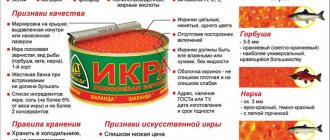Hello, dear motorists and car enthusiasts! Today we will touch on such an issue as the shelf life of motor oil. Not everyone thinks about this, but in fact, the composition of engine lubricant has a very complex formula and multi-component composition. And pouring a composition whose expiration date has already expired threatens serious problems with the internal combustion engine.
As part of this material, I propose to discuss the issue of timing and storage rules for motor lubricating fluid. You can find out how long you can keep the lubricant in your garage, what to do with it after opening it, and what the consequences of improper storage can be.
Be sure to look at the expiration dates and production date before purchasing and especially pouring liquid into your own engine. And it is not so important whether an express oil change is carried out or a complete replacement of the composition in the internal combustion engine.
Can I return it to the store?
If, when purchasing in a store, you purchased expired oil, then such an action is a significant violation of Art. 18 of the Law “On Protection of Consumer Rights”.
Therefore, in this case, you can not only safely return the purchase back to the store, but also complain to Rospotrebnadzor.
If the oil’s expiration date has expired after the date of purchase, then in some cases it is also possible to return the oil back.
The buyer has the right to return non-food products back to the store without giving reasons before the expiration of 14 days from the date of purchase. This statement fully applies to motor oil; it must be returned.
Technical regulations for the shelf life of motor oil
After familiarizing yourself with the most popular store-bought analogues of motor oil, pay attention to the markings or packaging label.
In this case, we are interested in the shelf life of motor oil. As a rule, the expiration date will be the same for everyone - approximately 5 years. It should be borne in mind that products sold in a car store (or online market) have an expiration date much longer than indicated. The warranty period begins from the moment the cover is removed and the packaging is depressurized. While in the store, pay attention to how the oil was preserved (whether the packages were exposed to direct sunlight, what the humidity in the store was and the ambient temperature). If at least one of the conditions is not met (especially exposure to UV rays), this oil is not recommended for purchase.
You can determine the expiration date of motor oil by the markings on the packaging.
Adding grease
Manufacturers usually write on the canister that the oil service life is up to five years (if the container is closed). Before refilling consumables, you need to check everything.
Particular attention must be paid to whether the characteristics prescribed by the manufacturer correspond to the indicators indicated on the container.
Often, in order to change their car oil, drivers purchase a canister that stores an amount of lubricant sufficient for one top-up. Some people constantly carry large supplies of consumables with them.
Old grease and new car
If you purchased a new vehicle and still have oil fluid, it is advisable to buy a different lubricant. This is due to the fact that only high-quality oil must be poured into new cars.
It is recommended to play it safe and pour in a new, only opened oil product.
If you have not started the car for more than six months, the oil poured into the engine may begin to react with formations and contaminants. The consequence of this will be that it will simply oxidize.
In order to avoid such troubles, it is advisable to change the oil before you start the engine.
Consequences of pouring expired oil into the engine
What to do with used oil?
If you service your car at a service station, then the car service center will take care of this issue. The dealer, like any reputable car service center, has agreements on the removal of waste fluids to the appropriate collection and recycling companies. When changing the oil yourself, the chain of actions lengthens slightly. Used oil must be drained into a sealed canister and protected from sunlight and high temperatures - exactly the same as in the case of long-term storage. Do not allow waste water to get into containers: if stored for a long time, mold may appear there. Next, there are several ways for the “second life” of used oil: let’s look at them in more detail.
Recycling
. In large cities there are processing plants where base oils are separated from “old” oils and can be reused. The main difficulty for a simple car enthusiast: they accept “working off” in large quantities: from 50 liters. The average motorist will accumulate this amount after 7-10 years of owning a car! True, you can earn a little money from this: prices per liter of delivered “working material” fluctuate between 5-10 rubles.
Disposal
. There are companies that deal with industrial waste disposal, including all kinds of liquids. This method has more unpleasant sides:
- you yourself will have to pay for disposal;
- Companies most often do not work with private traders and small volumes.
Burning
. In the early days of the automobile industry and up until the 1980s, used oil was simply burned. At that time, as we now understand, we thought much less about the consequences for nature and the human body. Today, this process is relevant only if the equipment meets established environmental standards and the company has the appropriate licensing.
Household use
. If you have experienced car enthusiasts in your family, then you know how useful used oil can be. We present the most popular places and methods of application.
- For space heating
. There is modern heating equipment that runs on waste oils - various air heaters and boilers. - As an anti-corrosion agent
. Old oil is well suited for treating the underbody and sills of a car for additional protection against rust. - To protect wood
. “Working out” will protect wooden structures from swelling and rotting. - As a lubricant for
locks, door hinges, chains, sewing machine mechanisms, garden tools and more.
No matter whether you use the oil after the change or not, take precautions when using and transporting it. Used oil continues to be toxic and flammable. And most importantly, pouring old technical fluids onto the ground, into a water supply or a reservoir is strictly prohibited
. In addition to large fines for you personally, this causes irreparable damage to nature and living organisms.
Winter storage
Winter oil storage adds several important rules to those already listed:
- Avoid sudden temperature changes
. Try to maintain a constant air temperature around the canister: the already described 22-24 degrees. Freezing oil is strictly prohibited: during severe frosts, the structure of the oil will change at the molecular level, the additive complex may separate, and the consequences of using such oil are unpredictable; - If you are going to use oil that has been left in the cold for a long time, shake the canister before use
so that the liquid is mixed and there is no sediment.
Rules for storing motor oil
These are, as a rule, the most basic criteria that determine the shelf life of motor oil. It is very important to preserve the lubricating properties of the oil, because this is their main functional feature, which loses its qualities over time. The following rules have the greatest impact on the preservation of the oil in its original form. Following the instructions below will help maintain and extend the life of your engine oil.
- ambient temperature. It is very important to remember a small rule that will help you not to forget about the importance of taking into account the temperature regime. Your food products tend to disappear, so to extend their shelf life you place them in the refrigerator. So with the engine, it is also important to keep engine oil in certain conditions. But this does not mean that the oil should be placed in the refrigerator. The upper temperature threshold should not exceed 40 degrees Celsius, the lower minus 18-20 degrees Celsius;
- light and sun rays. It is the direct impact of sunlight on a container of oil that makes the latter transparent. This, in turn, is fraught with sedimentation, which has a detrimental effect on the oil receiver mesh. The correct storage container can save the situation, more about it below;
- humidity. The interaction of water molecules and oil molecules creates insoluble particles, which, when they enter the engine chamber, clog the oil receiver and lead to a decrease in engine life.
Precipitation in the oil due to violation of storage rules.
Deadlines
Let's consider the shelf life of the most popular brands of automobile oils:
- Mobile, Castrol, Motul, Nissan 5w40, Lukoil - 5 years;
- Shell - 4 years;
- ravenol - 18 months;
- esso - 4 years;
- Total (Total Quartz) - 5 years;
- liqui moly - 5 years;
- Hado (Kharkov) - 5 years;
- Elf - 5 years old.
After the specified period expires, the lubricating fluid deteriorates - additives precipitate and characteristic properties are lost.
Information about the expiration date must be indicated on the label. You can check the authenticity of the barcode on the manufacturer's website.
Synthetics and semi-synthetics
Synthetic products are created artificially, and accordingly, their storage period is the longest (5 years), since the impact of the environment is minimal.
Semi-synthetic is produced with the addition of minerals and has a shorter shelf life.
Each type of fuel and lubricants has a range of applications:
- For an engine with low mileage, as a rule, a synthetic engine with a viscosity of 0W-20 to 5W40 is chosen. This is a very fluid substance, its use is explained by the small gaps between the cylinders and piston rings.
- The most common fuels and lubricants on the market are 5w30 and 5w40. What is the difference between them? — the difference is in viscosity: 5w40 is used in winter, 5w30 in summer.
- If you operate a car with high mileage (200 thousand or more), in certain cases it makes sense to switch to a thicker 10W40 oil.
The Mobil company produces Mobil Super 2000 in plastic bottles: 1 and 4 liters. There are also more budget analogues on the market, for example, KIXX, which is of high quality and reasonable price.
Mineralka
From 3 to 7 years.
Mineral lubricant consists of natural substances and is characterized by an easy production method. The chemical formula is much simpler, which determines the relatively low price of the product. But the service life is significantly shorter than that of synthetics and semi-synthetics. And this is not the only disadvantage of mineral liquid. In low temperature conditions, thickening occurs and the car becomes harder to operate, which can lead to unpleasant consequences. Mineral products are used in heavily worn units, as well as in gasoline and electric saws to lubricate the chain.
To operate a two-stroke chainsaw engine, a mixture of gasoline and special two-stroke oil is required. You can prepare the mixture for a chainsaw at home: take 100 ml of lubricant for 4 liters of gasoline.
Diesel oil
It is characterized by a large presence of detergent additives. For a turbocharged diesel engine, you need to choose higher quality materials, since the presence of a turbine causes significant overheating of the driving elements. As a rule, turbines are installed on expensive cars, which means expensive maintenance.
They also produce universal fuels and lubricants for diesel and gasoline engines; it says so on the bottle: for diesel and gasoline.
For two-stroke engines
To operate a two-stroke engine, you need an appropriate mixture of oil and gasoline. In the assortment of specialized stores you can always find Motul for 2t outboard motors. This is a very high quality, but not cheap product.
Transmission
Up to 5 years.
Gear oil is produced using the latest technologies: it has a high degree of purification, is environmentally friendly and affordable. It is recommended to change once every 5 years or according to the mileage specified by the manufacturer. The ATF marking means that this fluid is intended for the gearbox. For example, the well-known company LIQUI MOLI produces the Top Tec ATF model.
MULTI ATF 1L produced by MOTUL is intended for automatic transmissions of most American, European and Korean cars, as well as power steering fluid for a number of modern vehicles.
Open and closed
Different containers are used to package these products: from 1 liter to a barrel. Storage conditions are indicated on the packaging and must be followed. It is better to avoid direct sunlight, sudden temperature changes and freezing.
Of course, you should not store fuel and lubricants in the open. Despite the fact that when sold for bottling in a barrel, the container itself is kept tightly closed.
The shelf life of products in open containers does not exceed 3 years.
The product is always cheaper by bottle, but beware of unscrupulous sellers who may fill and sell expired or lower quality liquid.
How to check for suitability?
Often, even expired oil is still quite suitable for use. Therefore, it is necessary to determine the suitability or unsuitability of motor oil by visual means .
The structure of the lubricant must be uniform.
It is not allowed to separate the oil into separate fractions with different densities. You can check the consistency by simply pouring the oil from one container to another. During this process, the homogeneity of the composition can be determined.
The quality of motor oil can be assessed by pouring a small amount onto a white sheet of paper . It is necessary to hold the sheet at a slight slope so that the drop spreads slightly over the surface of the paper.
In this way, you can determine the presence of various impurities, sediments and debris in the oil. If dark spots, clots, or stains are noticed in the oil, then it is spoiled .
This article will tell you about the service life of a car battery.
Also a signal of oil spoilage is the presence of sediment . A small amount of sediment is quite common with many synthetic motor oils. However, large sediment is unacceptable even for this type of oil.
Integrity of original packaging
All of the above factors begin to operate after the seal of the package has been broken. Accordingly, if the canister is sealed, the oil can be stored in it for years. As a rule, the shelf life of oils is at least 5 years for synthetics, 4 for semi-synthetics and 3-4 years for mineral water. Moreover, if the oil is of sufficient quality, then it can be used if it has not changed its characteristics (in “garage” conditions it is determined by its appearance by color, fluidity, the presence or absence of sediment, separation into fractions). Over several years without movement, a product that does not have a reserve of quality will somehow change its appearance (they say that sometimes it even becomes moldy :)). This also includes differences in packaging. Oil in a 4L canister is more stable than in a barrel. In addition, if after opening a small package is almost always immediately poured into the engine, then in an open barrel it can stand in this form for quite a long time, experiencing the unpleasant effects described above.
How can you store motor oil?
Among the most common oil storage containers are:
- in a canister. The most optimal option due to the lack of penetration of sunlight, although modern analogues do not recommend pouring into iron containers due to the slow chemical reaction and possible precipitation. The shelf life of motor oil in a canister is usually much longer than other analogues and containers;
- in a plastic bottle. An unacceptable container that can only be used for a limited amount of time (for transportation, pouring, etc.) The fact is that the plastic from which the packaging walls are made easily reacts chemically with motor oil;
- in original packaging. An ideal option for storage; the oil can be stored in its original packaging for the entire warranty period.
Signs of expired engine oil
So, obvious signs of deterioration in product quality, characteristic of expired liquid, are:
- the presence of dark-colored sediment in the form of flakes;
- presence of turbid suspension;
- change in oil color;
- presence of inhomogeneities.
The presence of at least one of these symptoms should alert you - it is better to dispose of such a product. Remember that a change in the consistency, color, or smell of the oil indicates a loss of its original performance characteristics. If you pour such liquid into the engine, at best it will have a negative effect on the service life of the engine.











